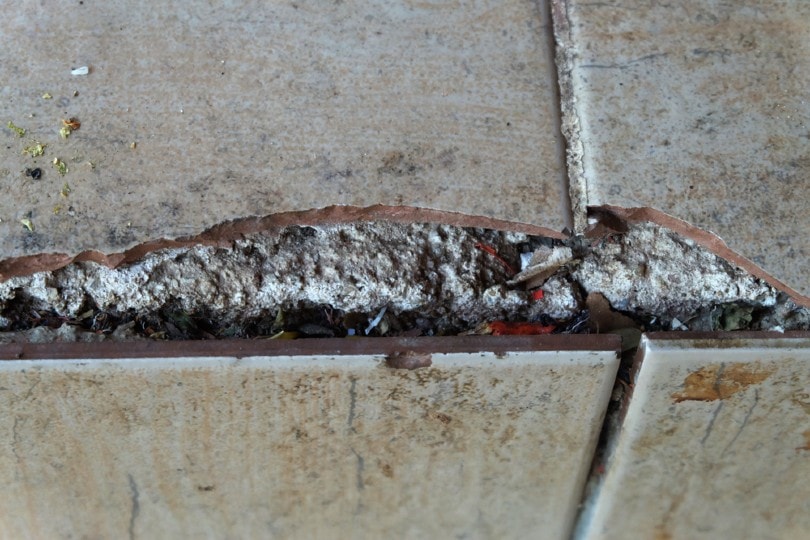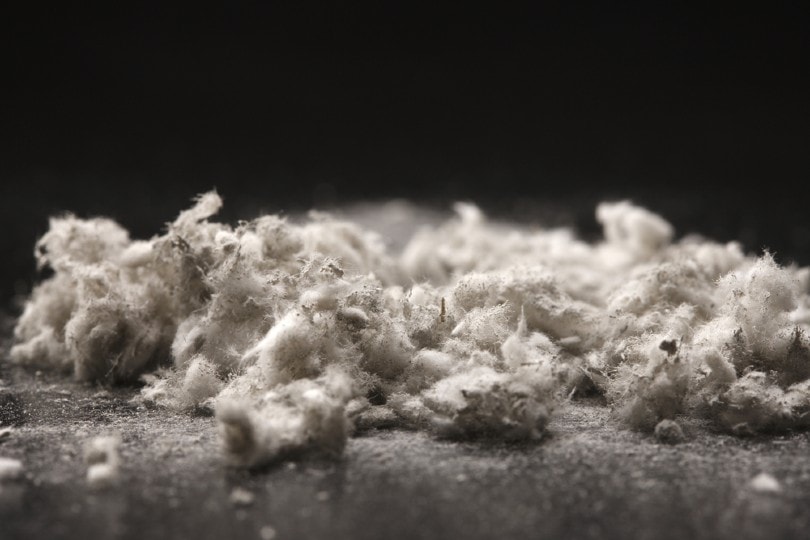What Does Asbestos Tile Look Like? Facts & FAQ
-
- Last updated:

Asbestos was popularized in the 1940s and 1950s as a cheap building material that offered fireproofing and soundproofing capabilities. It was used heavily in the manufacturing of ceiling and floor tiles, even though the first asbestos-related deaths had occurred decades earlier. Its use continued through the 1960s and until the 1980s, and while the material is no longer used, asbestos tiles can still be found in the kitchens and bathrooms of homes that were built before the 1980s.
Unfortunately, because asbestos fibers are difficult to detect by eye and not all tiles from the period were made using asbestos, it is difficult to identify asbestos tiles in your home.
It is possible to identify tiles that could potentially contain asbestos, by looking at the size, shape, and date that the tiles were manufactured. And if you believe that your floor or ceiling tiles could contain asbestos, you should have them professionally removed because exposure to the fibers can be potentially very dangerous.

About Asbestos
Asbestos is a naturally occurring mineral and there is evidence that it has been used for thousands of years. In particular, it was favored for its fire-retardancy, and the name “asbestos” derives from Greek and means inextinguishable. It was named for the fact that wicks made from the material did not burn up.
The mineral fibers were added to wallpaper in the early 20th Century and a couple of decades later, it was used in the manufacture of floor and ceiling tiles. It was added for its fire retardant capabilities and because it offered to soundproof while also being relatively inexpensive and workable.
Potential Dangers of Asbestos

When asbestos vinyl tiles are in good condition and are not damaged or broken, the asbestos is considered safe. However, when the tiles are broken, ripped, torn, or otherwise damaged, microscopic asbestos fibers can get into the air. When these are breathed regularly and for a long period of time they can cause or increase the likelihood of developing fatal conditions including lung cancer, mesothelioma, and laryngeal cancer. Exposure can also lead to asbestosis and other respiratory conditions.
As such, the use of asbestos as a building material has been prohibited in many countries, but there are no controls in place to prevent the import of asbestos tiles to the US from other countries.
Dealing With Asbestos Tiles
It is recommended that asbestos-containing products be safely and professionally removed to prevent the inhalation of dangerous fibers.
Professional asbestos abatement companies know how to work with and handle asbestos so that it doesn’t leak into the air. They also know how to legally and safely dispose of the asbestos once work is complete.
Many asbestos tiles were fixed to floors and ceilings using an adhesive that also contained asbestos, so even if the tiles can be safely removed without breaking them, doing so carries similar risks.
What Do Asbestos Tiles Look Like?
To make asbestos tiles, asbestos fibers were mixed with vinyl. As such, the fibers are virtually invisible to the human eye, at least until the tiles are ripped up. However, some clues indicate that a tile could potentially contain dangerous fibers.
- Although asbestos tiles were most commonly used between the 1940s and 1950s, those that were made in the 1920s could also contain the mineral so that any tiles manufactured between 1920 and 1990 could contain asbestos.
- Asbestos tiles were usually square, rather than rectangular. Common sizes were 9, 12, and 18 square inches. Ceiling tiles may also have been rectangular.
- Although it is difficult to tell by looking at floor tiles, ceiling tiles of this type tended to have a pinhole-like texture.

Conclusion
Although it does not guarantee it, if you have found floor tiles under the carpet in a house constructed before the 1980s, they could contain asbestos fibers. The incorrect removal of asbestos tiles can cause microscopic fibers to get into the atmosphere and, consequently, into the lungs. If you do suspect that you have these tiles in your home, you should get a professional abatement or asbestos removal company out to assess the tiles and safely remove them from your home.
Featured Image Credit: wararara, Shutterstock
Contents

